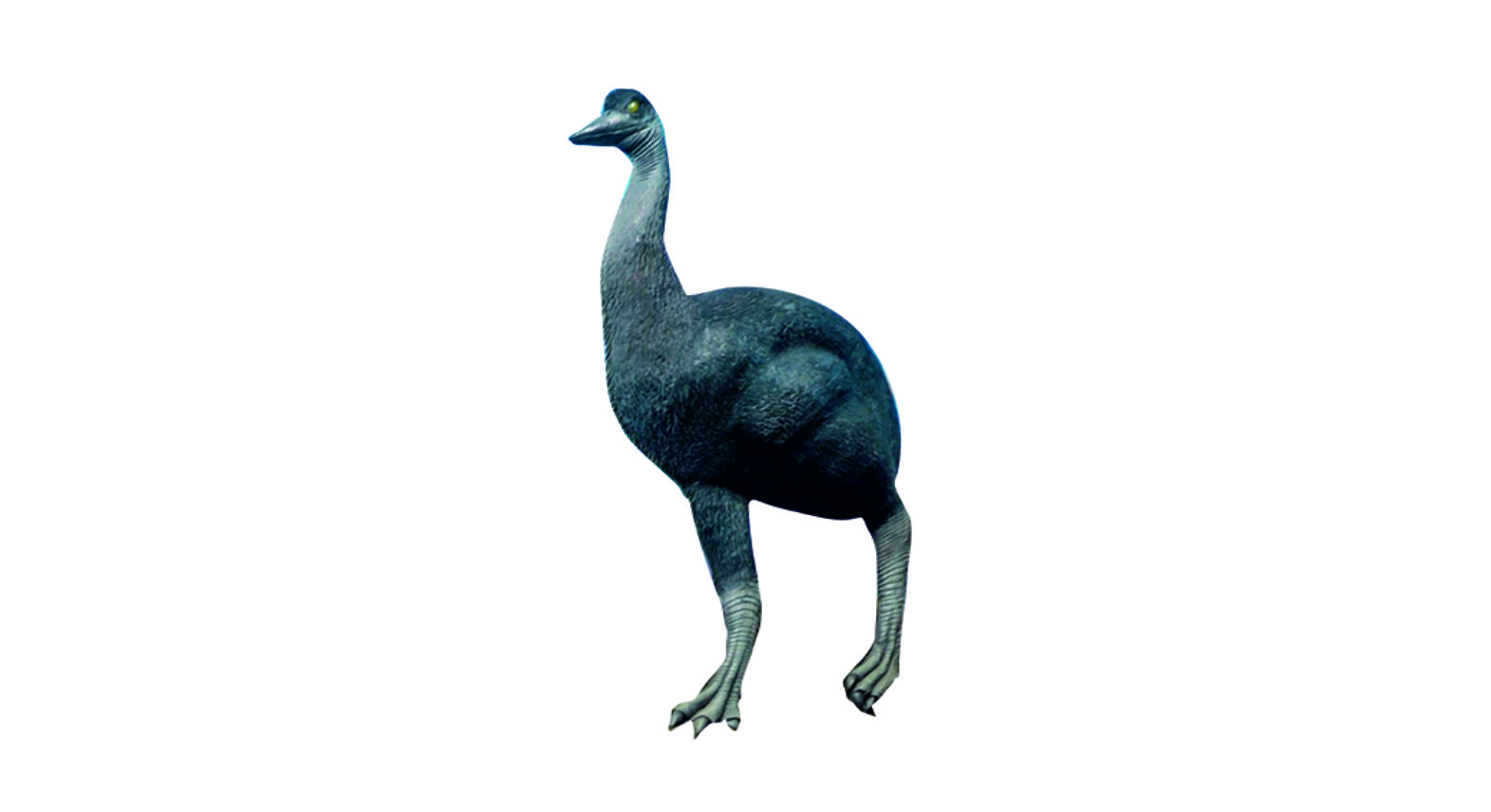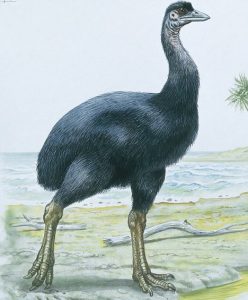
Elephant bird
Aepyornis maximus
-
- Aepyorniswas the world’s largest known flightless bird native to Madagascar.
- Its fossilsare foundin Pleistocene and Holocene deposits of the Madagascar island.
- It has been extinct since at least the 17th century.
- This bird, is

- believed to have been over 3 metres tall and weighing close to 400 kilograms.
- These birds unbelievably laid massive eggs, larger than any dinosaur egg; in some cases the eggs have a circumference of over 1 meter and a length up to 34 centimetres and the egg volume is about 160 times greater than a chicken egg.
- Fossil evidence indicates that each species was massively constructed, with conical beaks, short thick legs, three-toed feet, and relatively small wings that were useless for flight.
- According to researchers these birds were probably slow-moving inhabitants of forests.
- Elephant birds’ closest living relatives are kiwis, suggesting that ratites did not diversify by vicariance during the breakup of Gondwana but instead evolved from ancestors that dispersed more recently by flying.
Cause of Extinction
- Scientists suppose that extinction would have resulted from a combination of climate and vegetation change, hunting pressure from humans, and habitat loss due to deforestation.
- It has also been suggested that the extinction was a secondary effect of human impact due to transfer of hyperdiseases from human commensals such as chickens and guineafowl.
